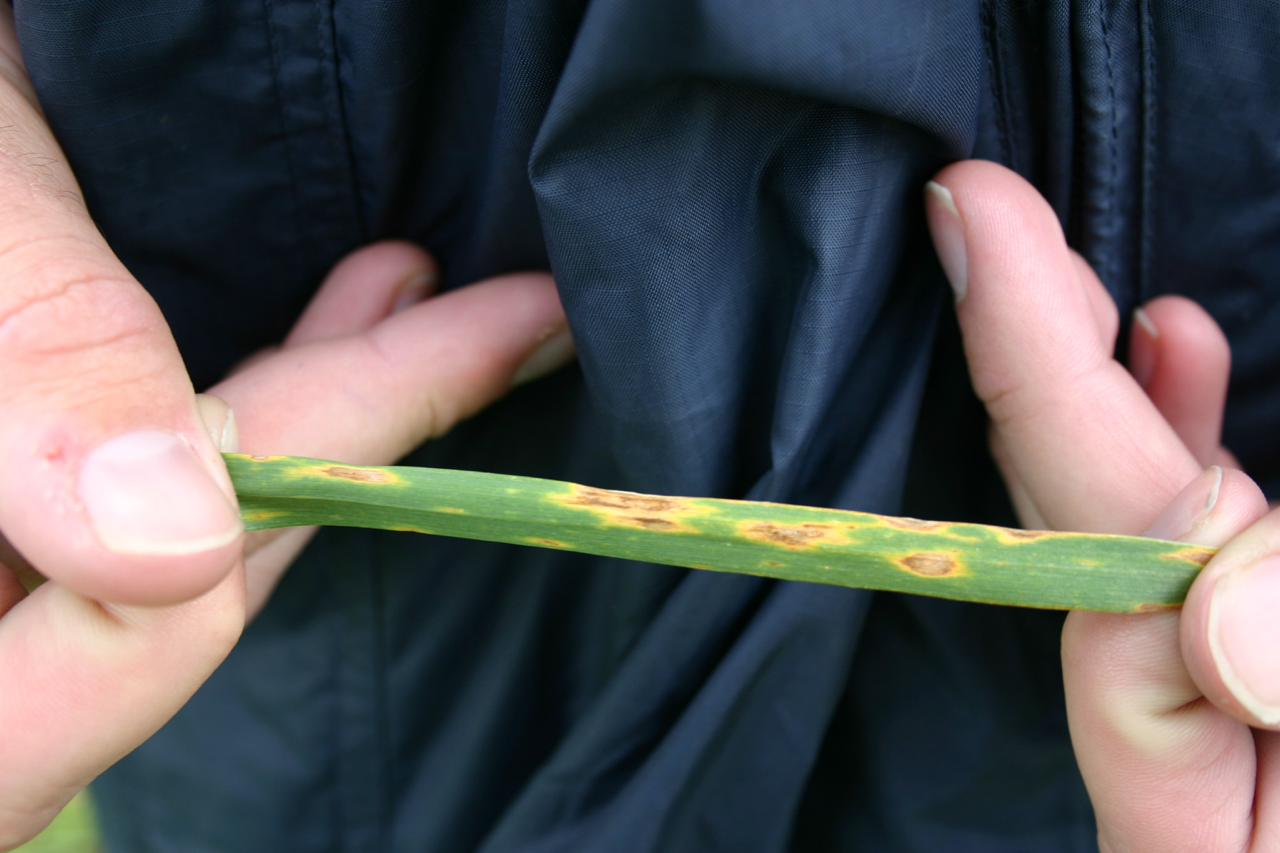Crop conditions and weather
More rain and more wind were seen this past week, fortunately without the hail or tornadoes seen in other areas nearby.
Crops are looking good and advancing well. Late-seeded canola is at the 3-4 leaf stage and earlier-seeded canola is beginning to bolt. “Bolting” is used to describe the stem elongation stage of canola when the flower buds that have formed in the centre of the rosette are pushed upwards. After a canola plant has bolted, the buds will open and flowering will begin.
Late-seeded wheat is at the 3-4 leaf stage and early-seeded wheat is nearing or at the flag leaf stage. The flag leaf is the final leaf that emerges from the top of the plant before the head (which contains the flowers and, later on, the seeds) emerges. The flag leaf is the most important leaf of the wheat plant because it alone contributes to approximately half of the yield of the entire plant.
What's going on in the field
Farmers may be applying a second herbicide application in canola at the current stage of the crop. The herbicides applied to our canola crops only kill the weeds that have already emerged from the soil. In rainy years, like the one we’re experiencing this year,
one of the challenges with weed control that farmers face is subsequent ‘flushes’ of weeds, where a whole new crop of weeds emerges that did not get controlled by the first herbicide application. If the canola is still small and cannot outcompete these new weeds very well, then a second herbicide application may be needed in order to control the weeds; otherwise, these weeds may steal resources from the crop and can also contribute to weed seeds being present in the harvested canola seed in the fall (called “dockage” - a cost to farmers when they sell their grain at the elevator).
Farmers are also evaluating the effectiveness of their herbicide applications that have already taken place this season. Depending on the herbicide used, it can take a few days to a few weeks for herbicide symptoms to appear on the susceptible plants. How did the herbicide perform? Are the weeds dying? If the weeds aren’t dying, did something go wrong with the application, or should herbicide resistance in the specific weed species be suspected? Is there a flush of weeds emerged that are at a high enough population that will need a second herbicide application? Evaluating herbicide performance is an important pro-active component of herbicide and weed management for the farm - future improvements cannot be made if we don’t know what went right or wrong.
Farmer's focus: insights for the week ahead
Rainy weather contributes to plant disease. Farmers have disease and fungicides on their mind at this stage of the crop. Fungicides work by protecting the plant parts before the disease starts; if diseased spots are already visible, a fungicide will not be able to ‘cure’ those spots, and any yield damage will have already occurred. When deciding to apply a fungicide, farmers must assess the current crop conditions (plant stand density, crop moisture situation), pay attention to the weather forecast, calculate the costs of fungicide application vs the potential crop yield, and rely on their past experiences. The thinking for the farmer is not so much, “How much yield will I gain by applying a fungicide?” but rather, “How much yield will I lose if I don’t apply a fungicide?”. Fungicides are applied with the goal of preventing disease and protecting the crop yield that is currently there.
Crop stage is extremely important for fungicide application because different diseases attack the crop at different growth stages, and because fungicides are all about disease prevention (not a cure), the application timing falls within a very short window. Earlier, it was mentioned that the flag leaf of wheat contributes greatly to final yield, so protecting the flag leaf becomes very important if disease conditions exist. If there is disease appearing on the upper leaves, a fungicide application at the flag leaf stage becomes very important to preserve crop yield. If leaf diseases are not too pressing when the flag leaf is emerged, then farmers may hold off this fungicide timing in favour of a slightly later application timing when the head has emerged in order to protect the crop from Fusarium head blight. More farmers are now spraying at the head timing because research has shown that this timing delivers the ‘best bang for their buck’, since the fungicide will protect the head as well as the flag leaf from disease.
Author
Jennifer Bogdan
Agronomist
Bridge to Land Water Sky Living Lab

